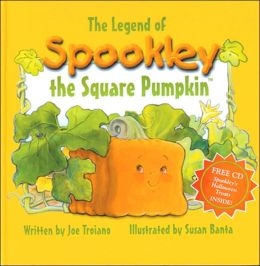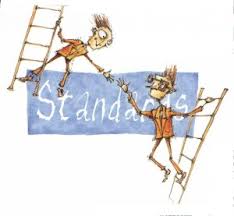Thursday, August 29, 2013
Gosh, I Like that 0-99's Chart!
Last night I started thinking about all the time I spent working with that 100's chart... and I now really like the 0-99 chart better. As I researched the 0-99's chart on the web, I came across a post by Jessica Boschen on her blog, What I Have Learned, that featured this idea:
She made the chart make even more sense!!!!! Look how this 3D Chart illustrates the continuation of the pattern.
She also made the 0-99's chart forward and backward in 2 different sizes that you can download for free from her blog
http://whatihavelearnedtoo.blogspot.com/2012/10/0-99-chart-freebie.html?showComment=1377762464844#c5607150949739340301
Then I started thinking of making the chart up in two colors to designate even and odd numbers...
That lead me to start thinking about
Maybe this is even better.... because it features the chart extending to 100.... all the way to 109.
This would be a great differentiation tool for that child that is ready for the next step.
By the way, have you seen this trick of using 2 congruent plastic cups and labeling each from 0 - 9?
This is a great manipulative to assist students in seeing that repeating pattern too.
Lastly, I need to stop thinking about numbers and go back to bed as it is 2:40 am :) Good night.
Deborah
Using the 0 - 99's Chart Instead of the Traditional 100's Chart
In Everyday Math they use a 100's chart to develop number sense.
Yet as I was looking at some Common Core Activities from the Georgia State site, I noticed that they used a 99's chart.
Deborah
Yet as I was looking at some Common Core Activities from the Georgia State site, I noticed that they used a 99's chart.
I actually like it better because I believe the way the
numbers line up would be easier for young children to comprehend.
See how the rows begin with the next tens. Wouldn't it make it easier for students to see the pattern with the new tens place beginning the row instead of ending the previous row?
What do you think?
Deborah
Sunday, August 25, 2013
Educational Field Trips and Kindness Jars
I was just in Wilson, North Carolina, at Deans Farm Market, working with a farmer to improve the educational experiences that students obtain when they come to his farm for a field trip. It was refreshing to work with a farmer and Marketing Director that didn't want a "jumping pillow" pumpkin to attract customers, but wanted a program that has connections back to the classroom and the Common Core Standards.
I developed 3 connecting lesson plans for each grade level, with all the supporting student materials, for Kindergarten thru Second Grade. Some of the lessons can be done at the farm, and some are a follow-up lesson back in the classroom. An example of an activity that can be done at the farm is "Graphing Using a Giant 3 by 10 Grid" that can be used to create a Human Graph.
In addition, they plan to read the book, The Legend of Spookley the Square Pumpkin, which promotes anti-bullying, kindness, and perseverance.

Spookley, the Pumpkin is different, and all the other pumpkins tease him. Then Spookley proves that being different can save the day!
Here's a sneak peek of one of the items we created...
I developed 3 connecting lesson plans for each grade level, with all the supporting student materials, for Kindergarten thru Second Grade. Some of the lessons can be done at the farm, and some are a follow-up lesson back in the classroom. An example of an activity that can be done at the farm is "Graphing Using a Giant 3 by 10 Grid" that can be used to create a Human Graph.
In addition, they plan to read the book, The Legend of Spookley the Square Pumpkin, which promotes anti-bullying, kindness, and perseverance.

Spookley, the Pumpkin is different, and all the other pumpkins tease him. Then Spookley proves that being different can save the day!
To go along with this book,, we created a behavior management connection, featuring "a Kindness Jar" or
" I Can Do It! Jar."
Here's a sneak peek of one of the items we created...
It was a great trip, and if you visit there to go on a hayride, field trip, or to make a scarecrow with the
" Make and Take Scarecrow Workshop" tell them that ...Deborah sent you!
Happy Fall Ya"ll
in
North Carolina
Deborah
Thursday, August 8, 2013
What Should a 3rd Grader Learn Verus a 4th Grader?
Easy Question.......................................
 Take time to understand the expectations of a 3rd Grader and a 4th Grade using the Common Core Standards.
Take time to understand the expectations of a 3rd Grader and a 4th Grade using the Common Core Standards.
Since learning standards are expressed in a progression of learning, you can clearly identify what each grade level concepts should be mastered.
I expect a 3rd Grader to be able to...
At 4th Grade, they should also be able to ...
 Let the Common Core Standards help you to define the differences of your expectations, versus
Let the Common Core Standards help you to define the differences of your expectations, versus
Understanding Your Concerns,
Deborah
Since learning standards are expressed in a progression of learning, you can clearly identify what each grade level concepts should be mastered.
I expect a 3rd Grader to be able to...
At 4th Grade, they should also be able to ...
"This is what I think you should know."
For example, the Common Core Committee defined what math skills students should be fluent in from Grades K to 7 in a Document titled, "Model Content Frameworks for Mathematics."
In Third Grade
For example, the Common Core Committee defined what math skills students should be fluent in from Grades K to 7 in a Document titled, "Model Content Frameworks for Mathematics."
In Third Grade
| 3.OA.7 | Students fluently multiply and divide within 100. By the end of grade 3, they know all products of two one-digit numbers from memory. | ||||
| 3.NBT.2 | Students fluently add and subtract within 1000 using strategies and algorithms based on place value, properties of operations, and/or the relationship between addition and subtraction. (Although 3.OA.7 and 3.NBT.2 are both fluency standards, these two standards do not represent equal investments of time in grade 3. Note that students in grade 2 were already adding and subtracting within 1000, just not fluently. That makes 3.NBT.2 a relatively small and incremental expectation. By contrast, multiplication and division are new in grade 3, and meeting the multiplication and division fluency standard 3.OA.7 with understanding is a major portion of students’ work in grade 3.)
In Fourth Grade
In Fifth Grade
|
I plan to do more specific posts with examples to explain how to use the Common Core Standards to guide your instruction, because I know you worry about doing your best for your multi- grade class.
Understanding Your Concerns,
Deborah
Wednesday, August 7, 2013
Tuesday, August 6, 2013
Do I Seat All the Student in One Grade Level Together?
If you are like me, by the end of the first week of school you will be asking yourself.... "Is that girl a third grader or a fourth grader?"
So, if you really want to know the answer to this question, put all the 3rd graders together in one section of your room and all the 4th Graders together in another section of your room.
Otherwise you might not know the difference...especially if you look at students through glasses that group students by their ability instead of their age.
Understanding your concern,
Deborah
Monday, August 5, 2013
Should I Keep the Grade Levels Separate in a Split or Multi-grade Classroom?
NO, you should not keep the grade levels separate in a split or multi-grade classroom!
Then.... what should I do?
You should create a community of learners.
What do you mean ... a community of learners?
To illustrate this point, let's create a class that combines third and fourth graders.
So let's put her with a partner that has a strength of creating wonderful sentences that synthesizes information in a new and unique way. Perhaps she is a 4th Grader and her new partner is a 3rd Grader.
That's what I mean by a community of learners. When you create learning situations that solve problems, researches new information, uses background information to make inferences... it does not matter what grade level that student is in.
My granddaughters and I just went to see the movie, "Turbo." On the way home, my soon to be 1st Grader suggested that she and her sister (4 years old) recreate the race at the Indianapolis 500 with Turbo. "Do you know that basket that you use for carrying clothes......?" Then it hit me, she was envisioning recreating Turbo using a laundry basket for the shell. Immediately the 4 year old replied, "I'm using a cardboard box...it's lighter."
If that's not a perfect example of what 2 different age groups can bring to the classroom....
So, I would spend some time during the first week of class showing off strengths of individuals instead of emphasizing their grade level.

Perhaps you might use a informational sheet that each student would complete. It would contain information such as:
My name is
________________________________________
If you need help
___________________________________just
ask me to be your partner. Together we
will be able to
____________________________________________
____________________________________________
__________________________________________
When I work in class, I wish I had a
partner that was good at
________________________________________
________________________________________
________________________________________.
Sometimes I have a hard time doing that
well.
Remember, that each child has strengths and weaknesses regardless of their age.
Understanding your concerns,
Deborah
Subscribe to:
Posts
(
Atom
)
.png)
.jpg)
.png)


.png)
.JPG)
.JPG)




"One of my strengths when working with a partner is..."
"When I work with a partner on a project, I always ____ so we both contribute to the final project."
"My partner knows that I am listening to their ideas about our project when I ..."
"Today, we are going to practice listening to a partner. I'll give an idea to you, and then you repeat it back to me. Here's a good sentence opener: "I heard you say ....."